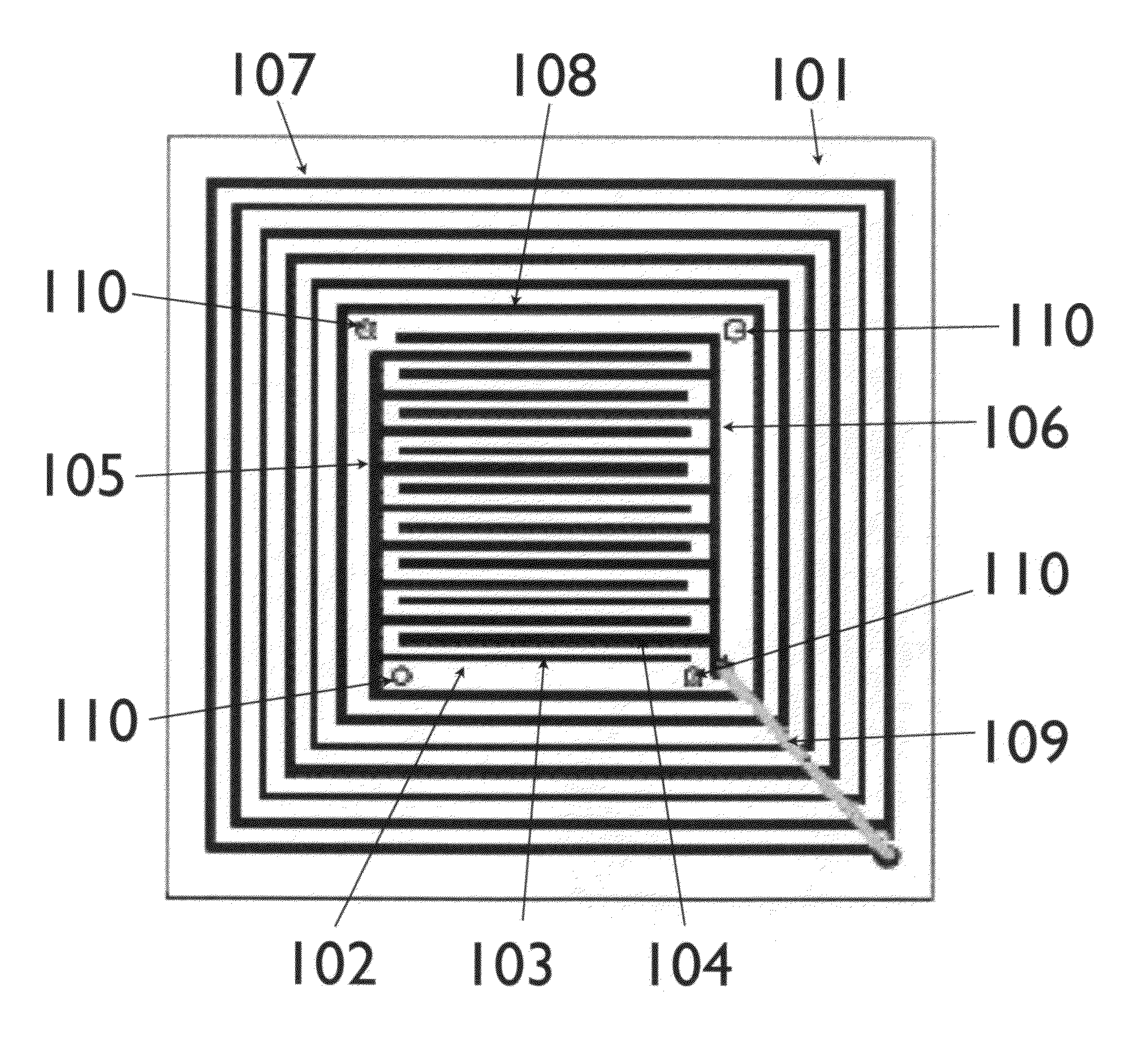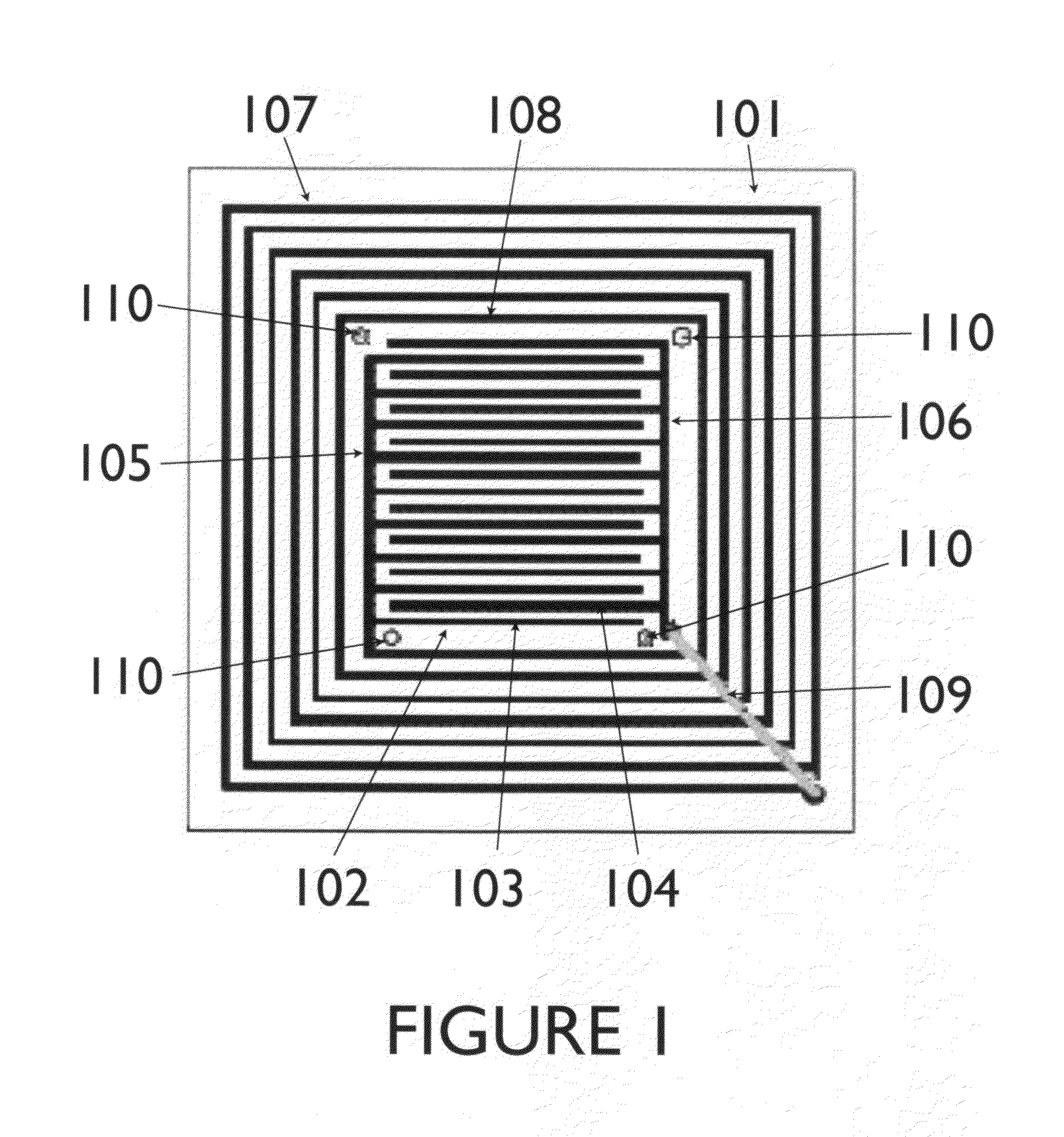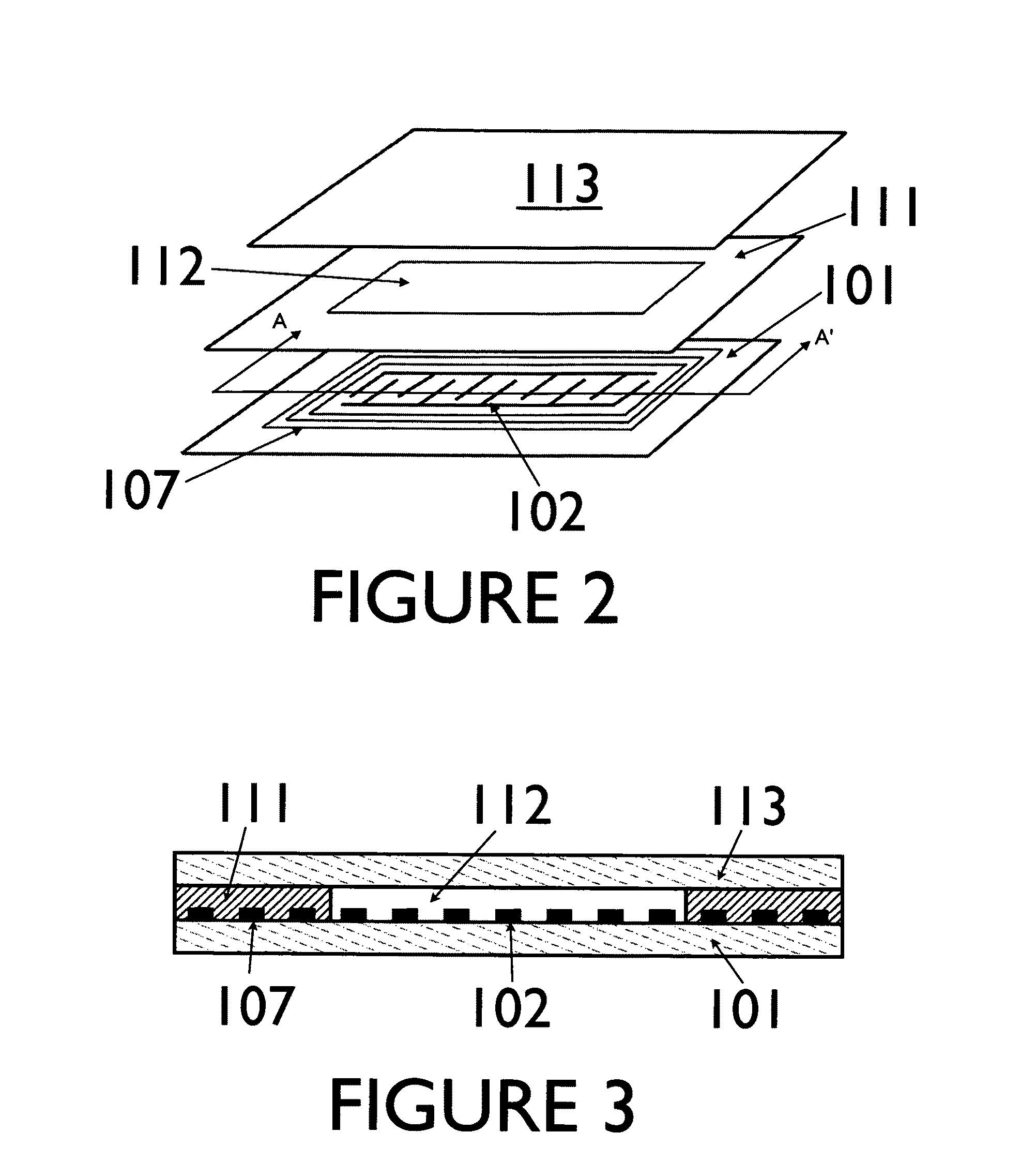High sensitivity passive wireless strain sensor
a strain sensor, high sensitivity technology, applied in the field of strain sensors, can solve the problem that existing strain sensors do not have a passive wireless function, and achieve the effect of stable characteristic and simple manufactur
- Summary
- Abstract
- Description
- Claims
- Application Information
AI Technical Summary
Benefits of technology
Problems solved by technology
Method used
Image
Examples
Embodiment Construction
[0019]A capacitive strain sensor is formed using a three-layer structure. The first layer is relatively thin. As part of the first layer, an interdigitalized capacitor is formed on the top surface. In addition, an inductor is formed by a coiled conductor that surrounds the capacitor. In one preferred embodiment the capacitor has a square shape. The inductor is wound around the capacitor so that it also has a square shape. The capacitor and inductor are connected to form a simple, passive LC circuit with a resonant frequency. A second layer is positioned on top of the first layer. The second layer has a opening that approximately matches the shape of the capacitor. A third layer is positioned on top of the second layer. The opening in the second layer creates a cavity above the capacitor between the first and third layers.
[0020]When the top of the third layer is attached to a structure, deformations caused by strain will likewise deform the third layer of the structure. This changes ...
PUM
 Login to View More
Login to View More Abstract
Description
Claims
Application Information
 Login to View More
Login to View More - R&D
- Intellectual Property
- Life Sciences
- Materials
- Tech Scout
- Unparalleled Data Quality
- Higher Quality Content
- 60% Fewer Hallucinations
Browse by: Latest US Patents, China's latest patents, Technical Efficacy Thesaurus, Application Domain, Technology Topic, Popular Technical Reports.
© 2025 PatSnap. All rights reserved.Legal|Privacy policy|Modern Slavery Act Transparency Statement|Sitemap|About US| Contact US: help@patsnap.com



